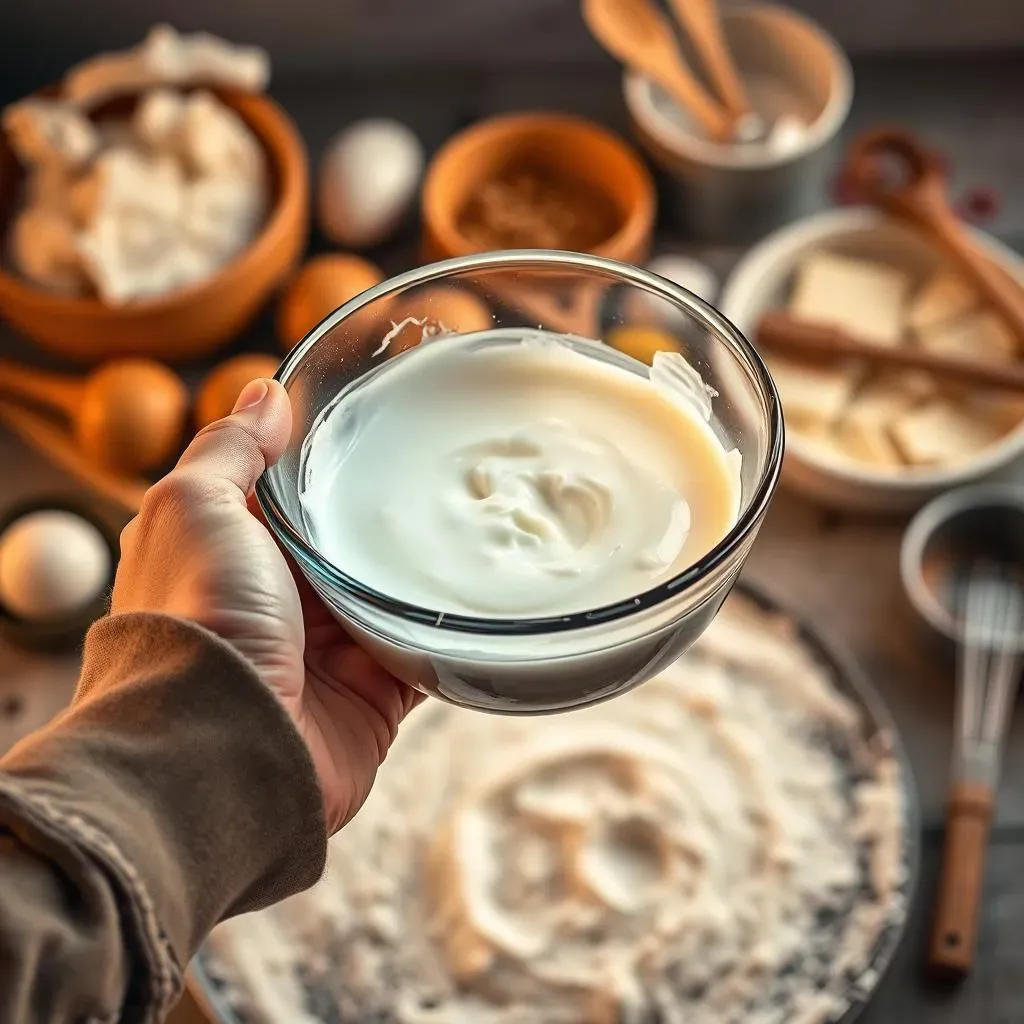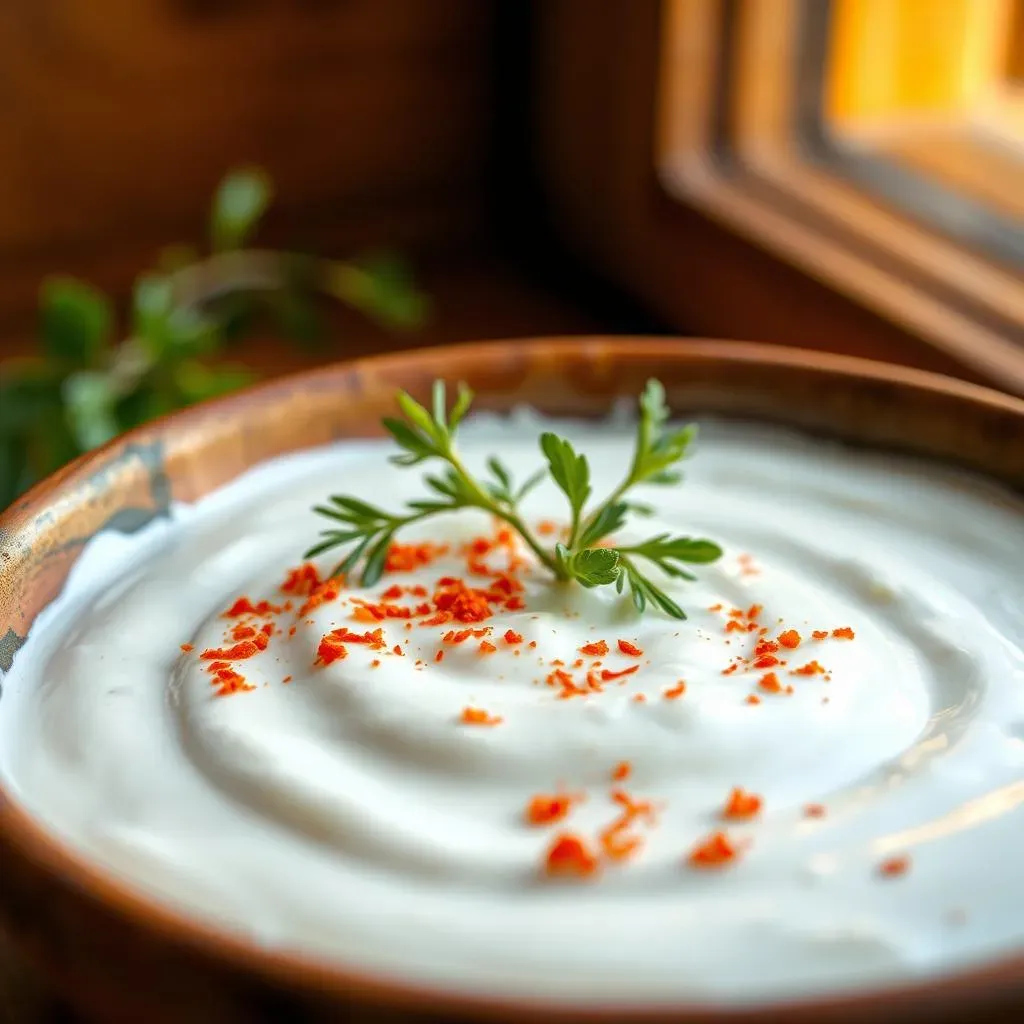Table of Contents
Ever find yourself mid-recipe, staring into an empty milk carton? Don't panic! That container of sour cream in your fridge might just be your culinary savior. It's a surprisingly versatile substitute, but knowing exactly how much sour cream to substitute for milk can make or break your dish. This article will guide you through the ins and outs of using sour cream as a milk replacement, whether you're baking a cake, whipping up mashed potatoes, or anything in between. We'll cover the basic substitution ratios, what to expect in terms of flavor and texture, and how to adjust your recipes for the best results. We'll also explore the differences between using sour cream in baking versus non-baking scenarios. Get ready to unlock a new level of kitchen flexibility! Let's dive in and explore how this tangy dairy product can save the day, one recipe at a time.
Sour Cream as a Milk Substitute: The Basics

Sour Cream as a Milk Substitute: The Basics
The Tangy Truth
Okay, so you're thinking about swapping milk for sour cream. I get it; it sounds a little odd at first. But here's the deal: sour cream can totally work as a milk substitute, especially in baking. Think about it—they're both dairy, right? The main difference is that sour cream has a thicker consistency and a distinct tangy flavor. This can actually be a good thing, adding richness and a subtle zip to your recipes. It's not a perfect match, but when you're in a pinch, it's a pretty awesome solution. Just remember, it's not a straight swap, we need to consider the liquid content.
Why It Works (and Why It Doesn't Always)
So, why can we use sour cream instead of milk? Well, both contain fat and moisture, which are key ingredients in many recipes. The fat in sour cream will add richness and a moist texture, which is especially great for baked goods like cakes and muffins. However, because sour cream is thicker, it doesn't have the same liquid content as milk. This is where we need to get a bit clever. We can't just replace one cup of milk with one cup of sour cream and expect things to turn out perfectly. We need to adjust the amount of sour cream, and sometimes add water to get the right consistency.
Factor | Milk | Sour Cream |
|---|---|---|
Consistency | Liquid | Thick |
Flavor | Mild | Tangy |
Fat content | Varies, can be low to high | Higher |
Liquid content | Higher | Lower |
Real-World Scenarios
Let's say you're making pancakes on a Sunday morning. You reach for the milk, and... it's empty. Instead of running to the store, you spot that tub of sour cream. Now what? This is where our substitution knowledge comes in handy. For pancakes, you can use sour cream but you'll likely need to thin it with a little water or even some milk if you have some left. The same idea applies to other recipes like mashed potatoes or some sauces. In some recipes, the extra tang can be a welcome addition. It's all about knowing what kind of recipe you're working with, and how to adapt the sour cream to play its part.
How Much Sour Cream to Substitute for Milk in Baking?

How Much Sour Cream to Substitute for Milk in Baking?
The 1:1 Rule (With a Little Caveat)
Alright, let's get down to brass tacks. When it comes to baking, the general rule of thumb is to use a one-to-one ratio. Yes, that means if your recipe calls for one cup of milk, you'd use one cup of sour cream. But here's the caveat – because sour cream is thicker than milk, it can sometimes make your batter or dough a little too dense. So, while you might start with that one-to-one ratio, you might need to add a splash of water or even a little bit of milk (if you have some) to get the consistency right. Think of it like this: the sour cream is the main player, but the extra liquid is the supporting cast, helping to balance things out.
Another thing to keep in mind is that sour cream has a higher fat content, which can make your baked goods extra moist. That's usually a good thing, but it also means you might need to reduce any other fats in the recipe, like butter or oil, to avoid things becoming too greasy. It's all about finding that perfect balance!
Adjusting Leavening Agents
Okay, so you've got the ratio sorted, but there's another piece of the puzzle: leavening agents. Baking powder and baking soda are what make your cakes and muffins rise. Since sour cream is acidic, it can react with baking soda. This is not necessarily a bad thing, but it does mean you might need to tweak your recipe slightly. If you're using a lot of sour cream, you may want to reduce the amount of baking powder and increase the baking soda a bit. This helps to keep your baked goods from becoming too dense or having a weird texture. It's a bit of a balancing act, but it's worth it for that extra moistness and flavor sour cream brings.
Don't be afraid to experiment a little here. Baking is as much an art as it is a science. Maybe start by reducing the baking powder by about a quarter of a teaspoon for each cup of sour cream, and adding an equal amount of baking soda. The key is to pay attention to how your batter looks and how your baked goods turn out. It's all about learning as you go and making those adjustments for next time.
"Baking is a science, but it's also an art. Don't be afraid to experiment and make adjustments to your recipes." - Some smart baker
Sour Cream for Milk in NonBaking Recipes: What to Expect

Sour Cream for Milk in NonBaking Recipes: What to Expect
The Tang Factor in Savory Dishes
Okay, so you're not baking, but you've still got that milk shortage and a tub of sour cream staring back at you. Can it work? Absolutely! In non-baking recipes, the substitution is a bit more straightforward, but you have to be mindful of that signature sour cream tang. In dishes like mashed potatoes, creamy soups, or even some sauces, sour cream can bring a lovely richness and a bit of a zing. But, and this is a big but, it will alter the overall flavor profile, it's not going to be a neutral swap. For example, if you're making a delicate white sauce, that tang might not be what you're going for. But if you're making a hearty chili, that extra bit of flavor can really elevate the dish.
The key here is to think about the final flavor you want to achieve. If you're okay with a bit of tang, then go for it! If you're trying to keep things mild, you might want to thin the sour cream with some water or broth to make it less intense. The good news is that you can usually add sour cream directly into the dish without too much fuss, but keep tasting as you go. It's one of those things where a little bit of experimentation can go a long way.
Consistency is Key
Just like with baking, consistency is a big deal in non-baking recipes. Sour cream is thick, and sometimes that thickness is what you want. Think of a creamy pasta sauce; the sour cream will give it a luxurious texture. But if you're trying to make a light and brothy soup, that thickness might be too much. This is where we need to think about thinning it out. Adding a bit of water, milk, or even broth can help you get the right consistency without losing too much of that creamy goodness. It's all about finding the sweet spot where you get the right flavor and the right texture.
For example, if you're making a salad dressing, you might want to add a bit of lemon juice or vinegar along with some water to thin out the sour cream. This will not only help with the texture but also add a bit of brightness to the dressing. And for mashed potatoes, you can use a combination of sour cream and milk (if you have some) to create the perfect fluffy consistency. The flexibility of sour cream is where it shines; it can adapt to your needs with a little bit of tweaking.
Recipe Type | How Sour Cream Acts | Adjustment Tips |
|---|---|---|
Mashed Potatoes | Adds creaminess and tang | Mix with a little milk or broth to adjust consistency |
Soups | Thickens and adds flavor | Thin with water or broth for lighter soups |
Sauces | Adds richness and tang | Adjust flavor with herbs or spices |
Salad Dressings | Adds creaminess | Thin with water, lemon juice, or vinegar |
Adjusting for Taste and Texture When Substituting Sour Cream for Milk

Adjusting for Taste and Texture When Substituting Sour Cream for Milk
Taming the Tang
So, you've swapped the milk for sour cream, and now you're wondering how to handle that extra tang. It's a valid concern because that distinct sour flavor can definitely change the vibe of your dish. The first step is to taste as you go, and don't be afraid to experiment. If the tang is a bit too strong, you can try adding a touch of sweetness, like a pinch of sugar or a drizzle of honey. This helps to balance out the acidity of the sour cream. Another trick is to use a milder sour cream, like a reduced-fat version, which tends to have a less intense flavor. And remember, sometimes that tang is exactly what you need to elevate a recipe, like in a zesty lemon cake or a creamy potato salad.
If you're really not a fan of the tang, you can also try mixing the sour cream with a bit of plain yogurt or even some cream cheese. These dairy products will help to mellow out the sourness while still providing that creamy texture you're looking for. The key is to add these in small amounts, tasting as you go, until you achieve the desired flavor. Think of it like a balancing act, where you're carefully adjusting the flavors to create the perfect symphony for your taste buds. It may take a little trial and error, but it's all part of the fun of cooking and experimenting.
Problem | Solution |
|---|---|
Too much tang | Add a pinch of sugar or honey |
Too much tang | Use a milder sour cream |
Too much tang | Mix with yogurt or cream cheese |
Perfecting the Consistency
Okay, so you've got the flavor under control, but what about the texture? Sour cream is thick, and sometimes that thickness can be a bit much when you're substituting it for milk. The easiest way to tackle this is by adding liquid. A bit of water, milk, or even broth can work wonders in thinning out the sour cream and getting it closer to the consistency of milk. Start by adding a tablespoon at a time, mixing well, and checking the consistency. You want it to be pourable, but not too watery. Remember, the goal is to get a texture that's similar to what you'd expect with milk in your recipe.
Another thing to consider is the temperature of the ingredients. If you're adding sour cream to a hot dish, it might thicken up even more. In this case, you might want to add a bit more liquid than you think you need. And if you're making a cold dish, like a salad dressing, you might need to let the mixture sit for a few minutes to allow it to thicken up properly. Just like with flavor, finding the right consistency is all about experimenting and adjusting as you go. It's a bit of an art, but with a little practice, you'll become a master at it!
It's like being a sculptor, carefully shaping the texture of your dish until it's just right.
- Add liquid slowly, a tablespoon at a time.
- Use water, milk, or broth for thinning.
- Consider the temperature of the ingredients.
- Let cold dishes sit to thicken.